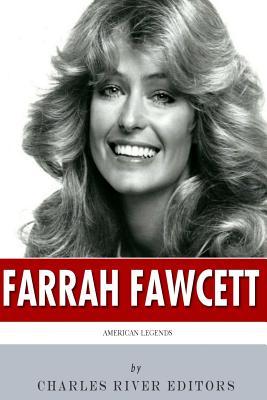*Includes Fawcett's quotes about her life and career
*Includes a bibliography for further reading
"I became famous almost before I had a craft." - Farrah Fawcett
"TV had much more impact back in the '70s than it does today. Charlie's Angels got huge numbers every week - nothing really dominates the television landscape like that today. Maybe American Idol comes close, but now there are so many channels and so many more shows it's hard for anything to get the audience, or amount of attention, that Charlie's Angels got. Farrah was a major TV star when the medium was clearly dominant." - Larry King
A lot of ink has been spilled covering the lives of history's most influential figures, but how much of the forest is lost for the trees? In Charles River Editors' American Legends series, readers can get caught up to speed on the lives of America's most important men and women in the time it takes to finish a commute, while learning interesting facts long forgotten or never known.
The sensation that Farrah Fawcett caused in the 1970s can be confirmed by the fact that TIME magazine designated her as the "epitome of '70s glamour". Indeed, there was no actress or supermodel that so comprehensively captured the attention of the American public during that decade (Sherrow 128). Her career accomplishments are remarkable, considering Fawcett did not emerge into the cultural spotlight until halfway through the decade. Whereas most famous celebrities earn a reputation for themselves by their mid-20s, Fawcett did not become a household name until 1977, when she was already 30 years of age. In other words, when Farrah became famous, she defied the odds, and her continued success in subsequent decades demonstrated that women could stay glamorous well into middle age.
To limit the accomplishments of Farrah Fawcett to her glamour is to diminish the cultural importance of her appearance, to ignore the significant role she played with regard to the representation of women in popular American media. After all, in order to do justice to what Farrah Fawcett meant to people, it is necessary to look beyond just how Farrah looked (while acknowledging the importance of how she looked) and acknowledge what Farrah did. It is significant to note that Farrah emerged in the cultural context of second-wave feminism and in the wake of the sexual revolution-a period in which women were breaking through the long-extant subordination of women at the hands of men, both in popular media and society more broadly. Farrah remains such an important figure because she had a tremendous impact on many entertainment platforms, from modeling (and posters) to television to cinema, particularly in her later years. It is fair to argue over whether Farrah Fawcett maintained the popularity she reached in the 1970s, but it cannot be doubted that she was able to successfully cross boundaries between cinema and television, print and electronic media. Through these ventures, she played an inexorable role in affecting not only how women were represented but also how women viewed their bodies; she pushed the boundaries of what women were capable of in American popular culture.
Farrah Fawcett also is such a culturally noteworthy figure because her work is so open to diverse interpretations. While Farrah is effusively regaled for being a feminist icon (however unwittingly), it also has been argued that she was objectified in a manner that was solely designed to satisfy the male gaze. In an effort to do justice to the intricacies of Fawcett's image, this biography explores Farrah's body of work, with attention paid to the distinct interpretations of her oeuvre and public image. Fawcett's personal background also is discussed, as is her bout with cancer that ultimately took her life at the premature age of 62.
